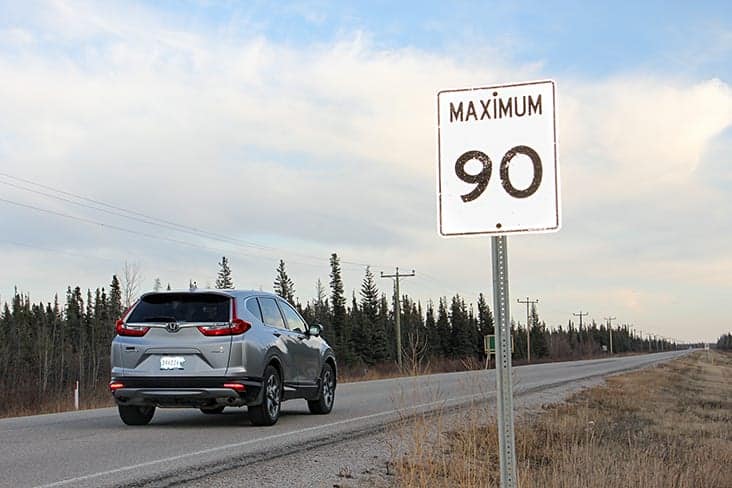Hay River Town Council has rejected joining in a call to raise the speed limit on Highway 5.
Ken Hudson, president of the Fort Smith Metis Council, wants to see the speed limit go from the current 90 km/h to 100 km/h because the route is now completely chipsealed.
Hudson proposed the increase in a Sept. 26 letter to Infrastructure Minister Wally Schumann and he also sent a copy to the Town of Hay River, asking that it write a letter of support.
At an Oct. 23 meeting, town administration recommended council approve a letter of support.
However, council quickly nixed that idea.
Coun. Keith Dohey said it's not council's business what the GNWT or Parks Canada do with their highway, which passes through Wood Buffalo National Park.
"But I would assume the highway speed limit is 90 kilometres an hour for a reason still," he said. "Increasing the speed limit on the same highway, I would say, is probably going to lead to higher risk for accidents. And if we're going to ask the government to change that, while we're up there asking maybe we ask them how they're going to look after that, who they're going to pay to answer ambulance calls on that highway."

The town has been in a long-running dispute over funding for emergency response it provides to GNWT highways outside of municipal boundaries.
Coun. Kandis Jameson noted the speed limit on Highway 1 and Highway 2 from the NWT/Alberta border to Hay River is 90 km/h and those routes are paved.
Coun. Steve Anderson also rejected a support letter.
"I would suggest we leave it up to the GNWT to deal with this," he said.
Only Coun. Vince McKay voted to write a support letter for the proposed speed limit increase.
"I don't have an issue writing a letter of support," he said. "It's not up to us to change it. It's the government."
However, McKay noted that, if Highway 1 to Yellowknife can have a 100 km/h speed limit, there should be no problem with the same speed limit on a newly chipsealed highway.
In its recommendation to council, town administration noted the road to Fort Smith from Hay River has received major upgrades due to a chipseal program.
"In our opinion, the highway can now support a higher speed limit without presenting a risk to those travelling the road," stated administration's recommendation.
Hudson has had no response to his letter to Schumann.
The main reason for the request was the completion of chipsealing on the highway, he said, although he added that everyone drives faster than 90 km/h on the route.
"I talked to people over the years and really nobody travels that fast," he said of the 90 km/h limit.
Hudson said he never requested an increase in the speed limit before now because he knew it would have been rejected.
That would have been because of the previous gravel section, which meant that passing vehicles sometimes sprayed other vehicles with mud and/or small stones.
"Now that's not the case," Hudson noted.
As for the lack of support to a 100 km/h speed limit from the Town of Hay River, Hudson did not sound upset.
"I thought it would be useful at least to alert people that I was putting the request in and if they wanted to support it, fine," he said.
Highway 5's final 64-kilometre gravel section through Wood Buffalo National Park was completely chipsealed as of September 2017.
In the federal budget of 2016, over $27 million was allocated to chipseal the gravel section.
In all, Highway 5 stretches about 265 kilometres from Hay River to Fort Smith.